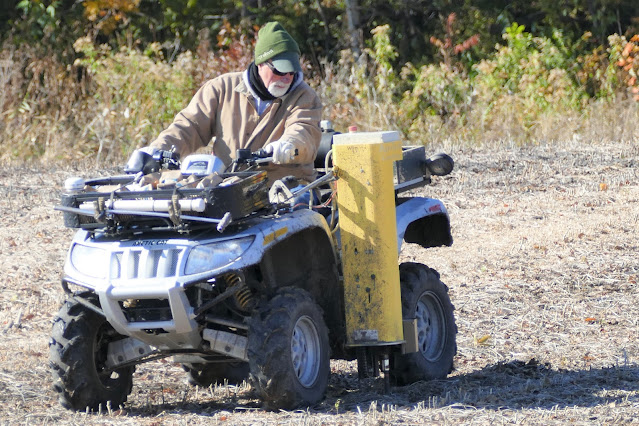By: Brad Carlson, Extension educator
Doesn’t the corn nitrogen rate calculator account for residual N?
The corn nitrogen rate calculator uses the Maximum Return to Nitrogen (MRTN) method, where data from N rate trials is fed into a database used to calculate the optimum N rate, given current corn and fertilizer prices. Because this method uses actual data, N credits are not used for corn on corn or corn following soybean situations (manure use excepted). This does not mean that there isn’t any carryover N from the previous year. It simply means that its presence is accounted for by the yield response in the studies. This method is very good at accounting for “average” conditions and eliminating the need to determine what might be present in any given field prior to fertilizer application.What if the conditions are not average or normal?
That’s one issue with this method. The loss processes for N are water based, so, if the soil is dry for a prolonged period, higher rates of N get carried over in the soil from year to year. Because soybeans do not receive N fertilizer inputs and a high percentage of cropland in Minnesota is in a corn-soybean rotation, this carryover N usually does not factor into decisions.Pre-plant soil nitrate testing
The University of Minnesota has recommended for decades that a pre-plant soil nitrate test (PPNT) be taken in corn following corn fields following a dry year. Additionally, fields with a long-term manure history have shown the ability to supply a greater than normal amount of N which can be accounted for with the test. This test recommends that samples be taken to a depth of two feet (to account for the fact that nitrate is mobile in the soil), and has recommendations calibrated for results reported in parts per million (ppm).The recommendation table begins at 6 ppm, acknowledging that numbers less than that are “background” levels experienced in most fields in most years. The original recommendation table topped out at 18 ppm with a credit of 155 lbs. However, as N requirements have crept up, a new level with a 205 lb. N credit at 24 ppm was added to the recommendation chart.
Fall 2023 nitrate testing data
Most of the primary corn producing areas in Minnesota have now experienced three especially dry years in a row, setting up the potential for carryover N. Minnesota Valley Testing Labs (MVTL) in New Ulm has graciously shared anonymous data with the U of M for samples taken in the fall for the past three years. It needs to be noted that these are not random samples, but from situations where a credit was considered likely.The numbers are striking. A total of 88% of submitted samples this year had some credit based on U of M recommendations, with 46% showing a credit of at least 155 lbs. N/acre. When one considers the new category with a 205 lb. credit, a full 30% are in this situation. These numbers are nearly double the percentages from last year, and may represent multiple years of carryover N.
Crediting carryover N can boost profitability
For the farmer, this represents free fertilizer, which should be welcome given current corn prices. From a water quality standpoint, this N is prone to be lost to the environment if it is not taken up by a crop, and adding additional fertilizer will exacerbate the situation.One farmer questioned whether it was worth adjusting crop rotations to more corn following corn to take advantage of this. There are many other facets that a farmer needs to consider before making this decision, but it is worth thinking about. At the very least you should consider taking advantage of the dry and warm conditions to take soil samples (remember to sample two feet deep) to see if you have a credit. For many, there is still time to adjust your fertility plans for the coming crop year. This includes lowering your total N rate applied (if not eliminating it altogether) or changing your application timing. If you choose to skip a pre-plant N application an in-season soil test can be taken at the V2 – V6 growth stage to add confidence that the crop will not be short of N before the end of the growing season.
For more information on the pre-plant soil nitrate test, view the U of M’s corn fertilizer guidelines at: z.umn.edu/CornFertilizer.
Additional resources:
- 2024 Spring fertilizer outlook podcast episode
- Thinking of getting an early start on fertilizer applications? Here are a few things to consider.
- Making sense of Minnesota’s corn fertilizer guidelines: Frequently asked questions and answers
- Nitrogen Smart: Free online course
For the latest nutrient management information, subscribe to the Nutrient Management Podcast wherever you listen and never miss an episode! And don't forget to subscribe to the Minnesota Crop News daily or weekly email newsletter, subscribe to our YouTube channel, like UMN Extension Nutrient Management on Facebook, follow us on Twitter, and visit our website.
If you have questions or comments, please email us at nutmgmt@umn.edu.

Comments
Post a Comment